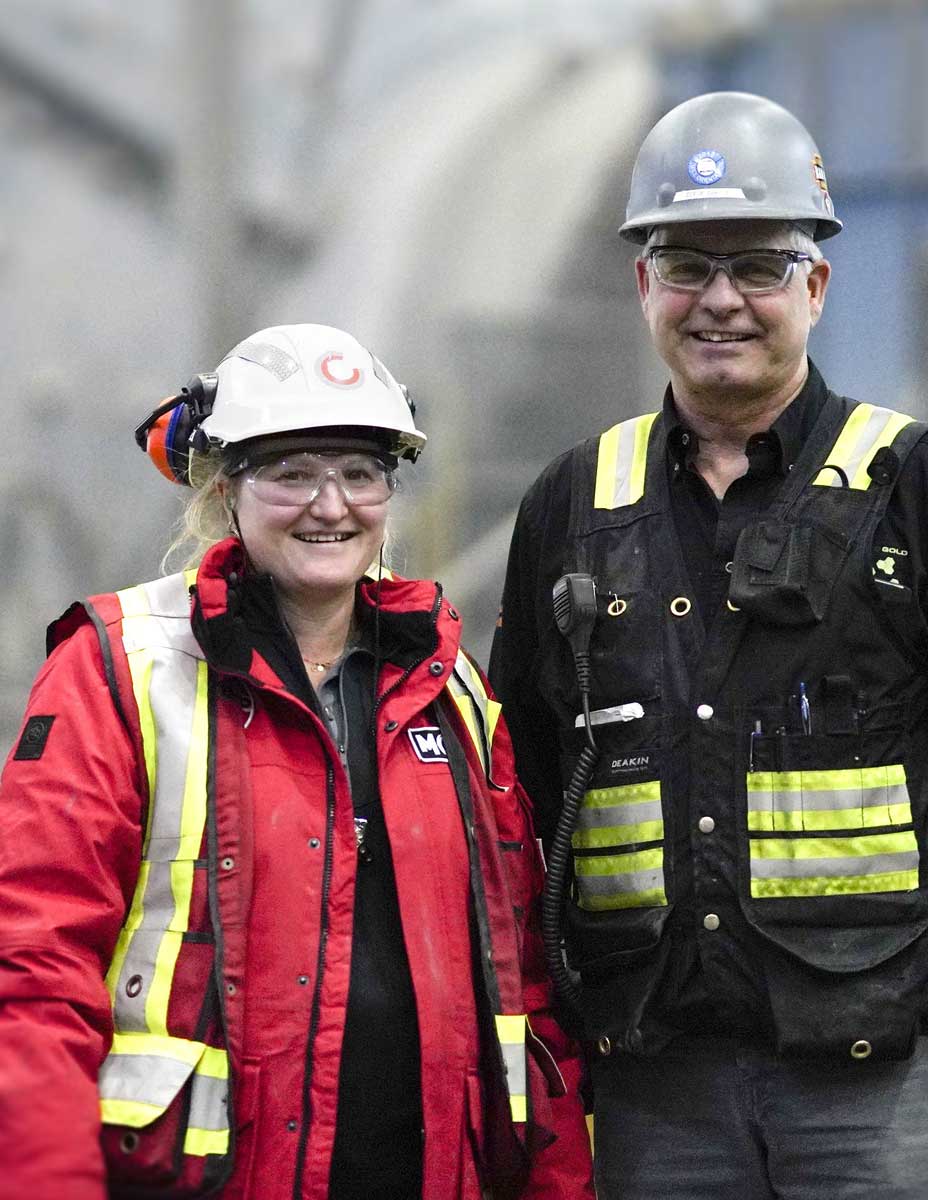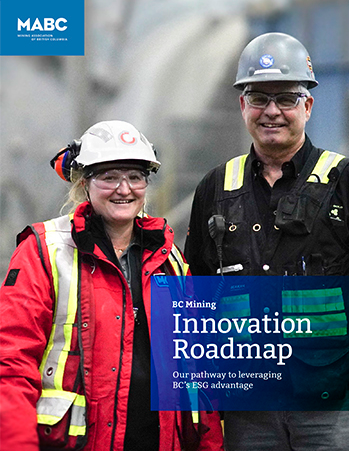The BC Mining Innovation Roadmap serves as a guide to establishing BC as a globally competitive mining region with a thriving culture of innovation and collaboration, a regulatory regime that supports innovation and high environmental and safety standards, and a workforce prepared for the future. This vision is underpinned by trusted relationships and shared values with the Indigenous and non-Indigenous communities, and all mining industry stakeholders.
The BC Mining Jobs Task Force envisions the province’s mining industry as the backbone of an inclusive, progressive and low-carbon economy, and a desired career path for the next generation. The Innovation Roadmap is one of the Task Force’s key recommendations in its final report. As directed by the Task Force, the Innovation Roadmap was developed through an extensive multi-stakeholder engagement process under the guidance of a highly experienced advisory committee. Consultation involved more than 280 participants spanning the entire mining ecosystem and more than a dozen engagement events.
Support for the Innovation Roadmap
”To me, mining is an industry that values sustainable practices and safe extraction of minerals for global demands. I am most proud of the environmental and social best practices that we bring to the local communities and the high standard we hold ourselves to as an industry.
Angela JohnsonExploration Manager, Calibre Mining Inc.
”I’m most proud of the fact we’re pioneering a new way to communicate complex mining data that facilitates meaningful consultation and engagement with communities.
Eric MayTechnical Artist, LlamaZOO
”I am proud to be an Indigenous woman in mining, allowing me to influence positive change, shifts in process and ensuring mutual beneficial relationships are developed between industry and communities.
Christy SmithVice President, Indigenous and Stakeholder Engagement, Falkirk Environmental Consultants
Innovation Roadmap Goals
The BC Mining Innovation Roadmap features clear guideposts: goals, desired outcomes, actions and evaluation metrics. It also provides a path for implementation and a method for tracking progress. The Innovation Roadmap’s four goal areas are:
Foster an innovative and collaborative culture
Regulators wishing to maintain existing safety and environmental health standards can be resistant to new technologies and practices. Industry and investors wishing to minimize the risk of delays in regulatory processes and potential cost increases are also wary on innovation. In addition, new or emerging technologies face barriers to being demonstrated at operating sites. A cultural shift to embrace new technologies, processes and services is needed to further strengthen efficiency and safety and reduce environmental impact.
BC has both a globally recognized mining industry and an emerging technology sector. There are few BC tech and clean tech companies specializing in mining and the sectors have only recently begun to collaborate. A carefully planned strategy, including support from the provincial government, can assist to bring these sectors together, enabling them to develop and implement new innovations in mining.
Improve regulation to support innovation
BC’s mining regulatory framework is a patchwork of legislation and policies designed to enhance safety, environmental protection and incorporate feedback from communities and stakeholders. Mining proponents have identified that the absence of clear regulatory pathways can impede investment in innovation and stifle attempts to address challenges in innovative ways.
Government and industry both recognize that embracing innovation will result in more efficiency, enhanced safety and better environmental management. There is strong support to adopt a risk-based approach that ensures applications receive an appropriate level of review. This type of regulatory regime would allow government to focus its finite resources on the highest-risk activities while enabling industry to more easily adopt low- or no-risk innovations.
Leverage BC’s ESG advantage
The world is more focused on the challenge of climate change and environmental management than ever before. Greater emphasis is being placed on the environmental, social and governance performance of suppliers. BC is well-positioned to emerge as a leader in providing the sustainable-sourced materials required to support the transition of the global economy to a cleaner, low-carbon future. Our province has an abundant and reliable source of clean electricity. BC’s mine operators are also committed to respectful and strong relationships with Indigenous and non-Indigenous communities, consistent with the principles of UNDRIP.
BC is building from a strong base of established research and development collaborations that are already focused on environmental management innovations in mining. BC’s mining industry can make important contributions toward global sustainability through export of knowledge, services, solutions and materials for use in clean and green technologies. By expanding our reach, BC can contribute to the achievement of the UN Sustainable Development Goals while enhancing the mining industry’s economic competitiveness.
Build the workforce for the future mine
The ideal future mine will be more digitally connected, enabling broad use of automation and autonomy, robotics, big data analytics and artificial intelligence. It will also be electrified and have a smaller environmental footprint. Many of our mines already have some of these attributes. These features bring benefits to governments, workers and operators, contributing to a safer, healthier and more efficient operation that will open doors for developments that were previously technically and/or economically impractical.
As this evolution in mining occurs, the workforce profile will evolve — shifting away from a heavy reliance on physical labour toward a focus on information technology, data analytics and technical expertise. These new skillsets will require higher levels of education and graduates from historically atypical mining degrees, such as social sciences and mathematics. For the BC mining sector to remain competitive, innovative approaches to building a workforce — attracting new skilled/educated workers, retaining skilled workers and re-skilling existing workers — is vital.

